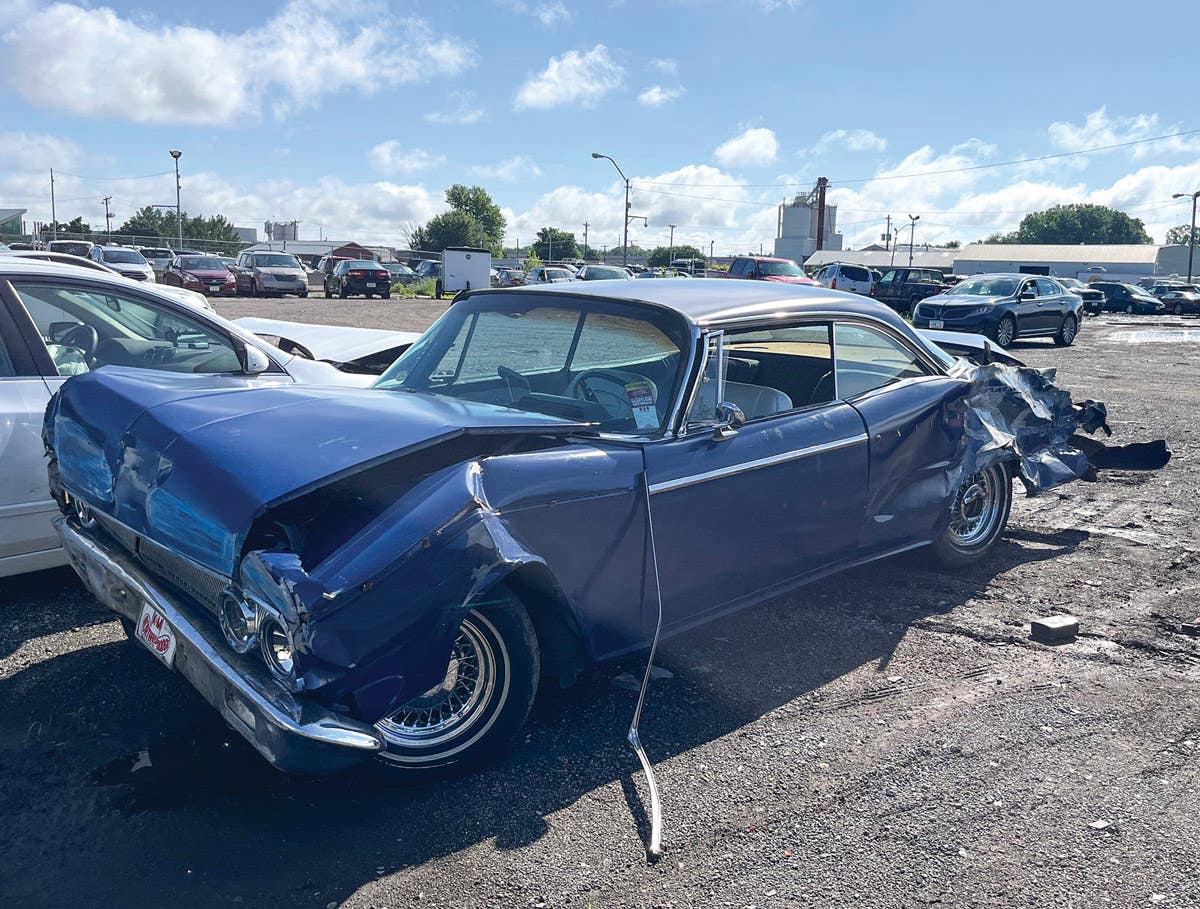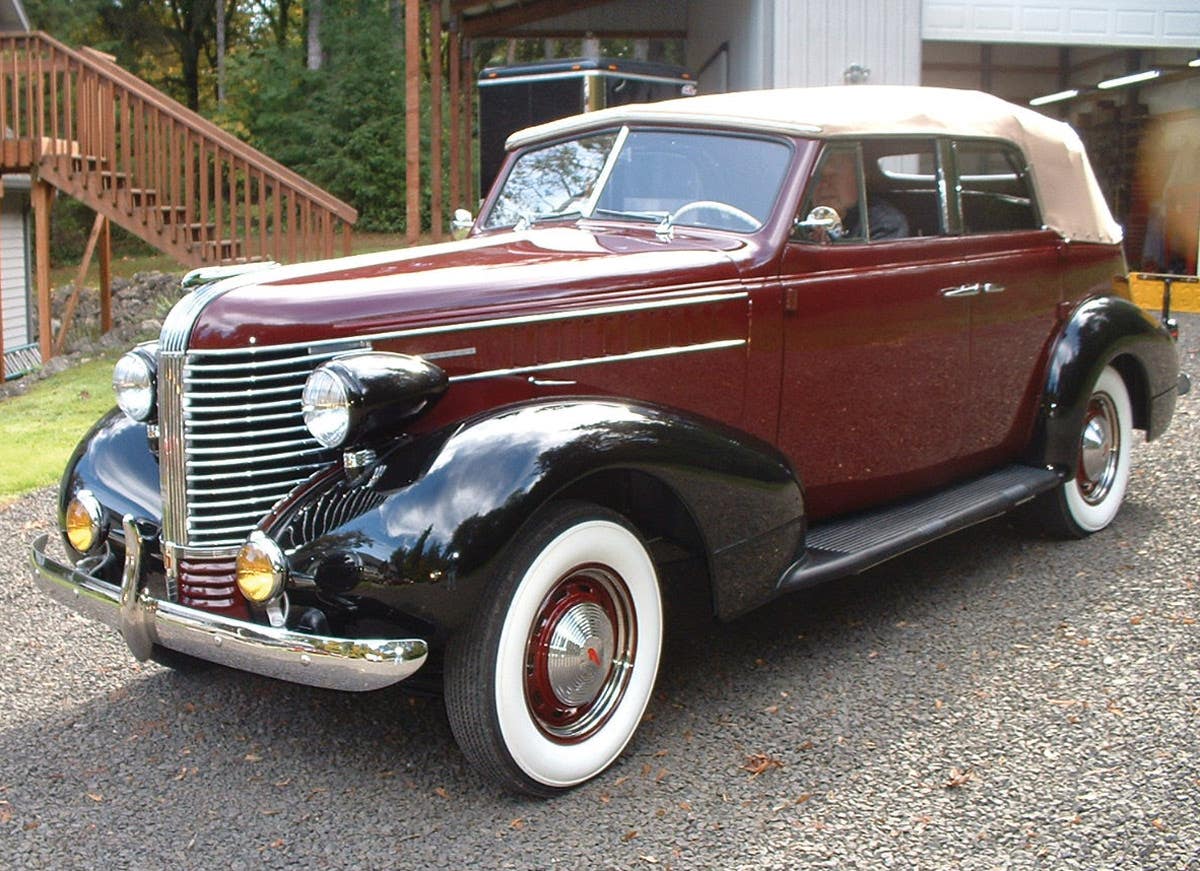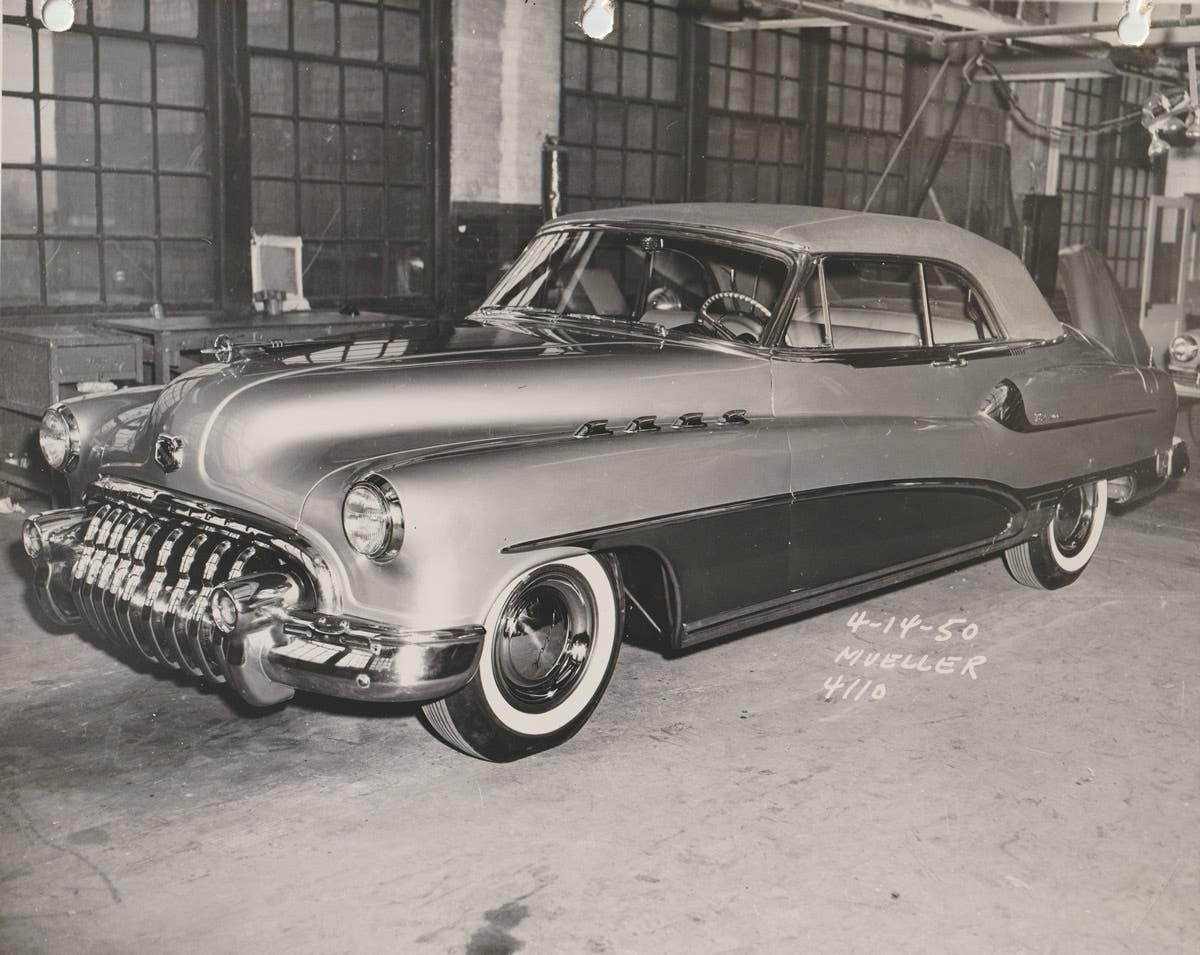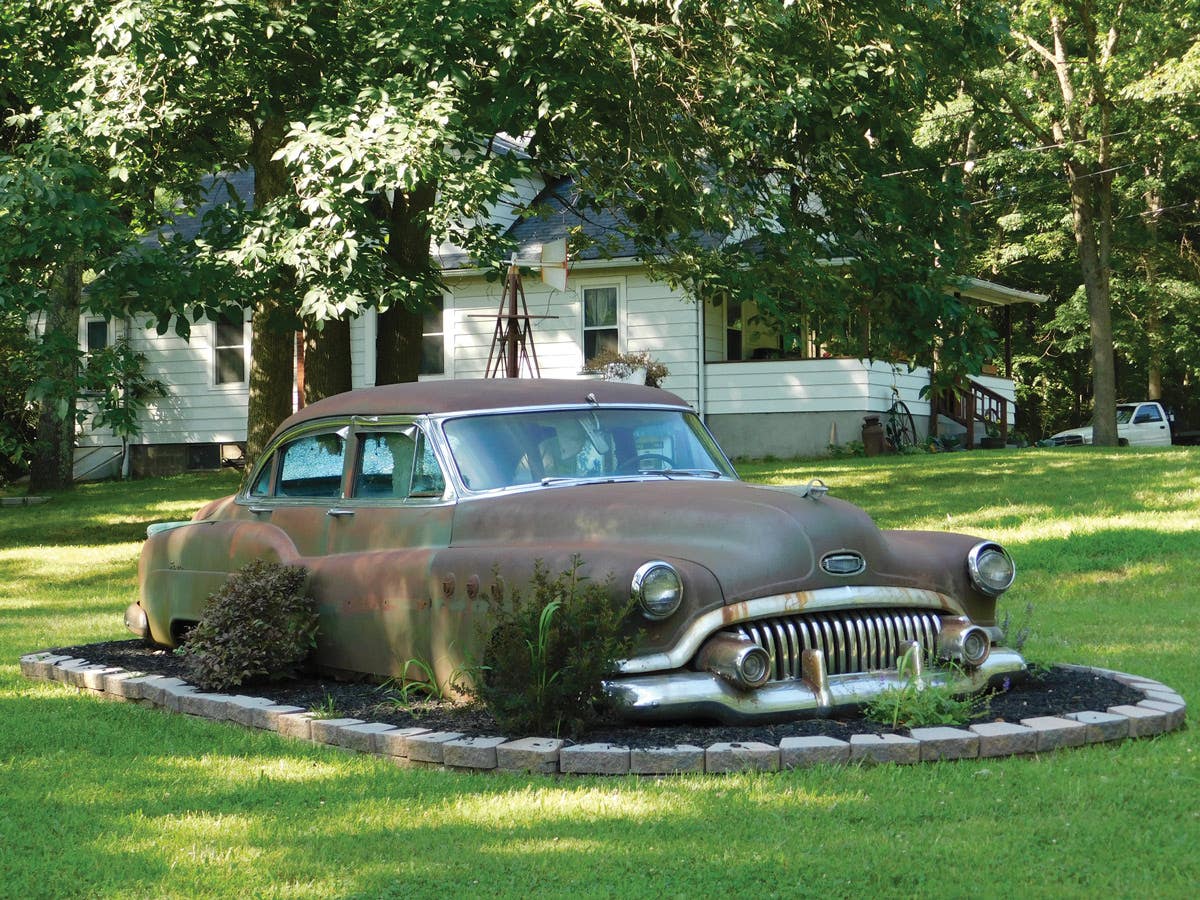Car of the Week: 1965 Pontiac 2+2
Phil Rauch is convinced there is a connection between the replicas that used to sit on his dresser and the stunning 1965 Pontiac 2+2 that now sits in his garage.
Story and photos by Brian Earnest
Phil Rauch was in training to restore old cars long before he knew it. Rauch never could have guessed that his affinity for assembling plastic models would pay off so handsomely when he finally moved up to the real thing, but he is convinced there is a connection between the replicas that used to sit on his dresser and the stunning 1965 Pontiac 2+2 that now sits in his garage.
“I built a million model cars when I was younger,” recalls the West Allis, Wis., resident. “I would just meticulously build and detail them — every little thing. So the way I looked at this was just like a model car. The parts were just bigger and heavier.
“I used to make little plug wires out of my mom’s sewing thread … I’d take springs out of ballpoint pens to make active suspension … Oh yeah, I was into it. Building model cars definitely did help, big time.”
Rauch spent 25 long years working on his award-winning Pontiac. He was clearly never in a hurry to finish the project. It was more important to him to get every detail right before he moved on to the next step — not because he wanted to collect trophies and make the car a celebrity, but because it was just his nature to do things carefully.
Rauch was definitely not in the market for a fixer-upper, or a car of any kind, when his former brother-in-law convinced him to take the 2+2 back in 1975. Rauch says he didn’t exactly jump at the chance to drag the car home, but he trusted his brother-in-law’s advice and took a chance.
“[He] sold it to me for $250, and at the time it wasn’t running,” he said. “He was looking to sell the car and he would rather sell it to me because he knew I would put it back together, which I did. All my cars I kept really nice and clean. That’s just the way I was – meticulous. People say I’m meticulous, he just called me anal.
“He always told me that it will probably be worth money when it’s done. Well, I knew nothing. I was just a novice at restoring cars at the time and I just took his word for it. He had a lot of hot cars, lot of hot Chevys back then. This was just a used car at the time. It wasn’t running, but it was all there.”
The more homework Rauch did on the 2+2 nameplate, the more enamored he became with his project car. And there was a lot to like with the fanciest members of the Catalina lineup. The 2+2s were big, powerful, highly optioned cars that earned high marks in almost every category, but were still relatively scarce. Rauch figured he had really hit the jackpot because his car had the desirable 421 H.O. engine option, only minor rust problems, relatively low miles and all its parts. “I started researching it and came to find out that they didn’t make many of them,” he said. “This one was all faded out. It had four flats. He let somebody use it and they basically blew the motor up – basically wrecked the rings. They just overwound it. They didn’t do anything to it internally, just broke a bunch of piston rings.
“It had a spot maybe the size of a silver dollar behind the wheels in the rear quarter panels, that was the only real rust spots on it.”
The car’s original owner lived in Ionia, Mich., but the car had changed hands several times by the time Rauch got it in 1975. “It had come to Rank & Son Buick in Milwaukee in 1968,” he said. “I’m the fifth or sixth owner. My brother-in-law was a business owner, and somebody owed him money and they basically gave him the car. That’s the story I got, anyway. How true it is, I don’t know.”
Pontiac first unveiled its 2+2 option for its 1964 Catalina sport coupe and convertible. A year later, the 2+2 became a more substantial $418.54 “sports option” package that took advantage of new styling and a chassis redesign for all full-sized Pontiacs. The result was an extremely attractive automobile with outstanding performance.
The 2+2s were available as either two-door hardtops or convertibles. The 421 big-blocks under the hood immediately gave the cars some credibility with the high-horsepower crowd, and the big power plant was wrapped in a handsome body with a bold “ship’s prow” front end with stacked headlamps and the signature Pontiac divided grille. Front fender louvers and 2+2 emblems on the hood, rear fenders and rear deck all set the 2+2 models apart from their Catalina kin.
Other standard 2+2 amenities included bucket seats, dual exhaust, heavy-duty springs and shocks, chrome air cleaner and rocker covers, pinstriping, carpeting and all the standard Catalina goodies.
The base 2+2 engine was now Pontiac’s 421-cid V-8 with a 10.5:1 compression ratio and a four-barrel carburetor. Its ratings were 338 hp at 4,600 rpm and 459 lbs.-ft. of torque at 2,800 rpm. The standard transmission was an all-Synchromesh close-ratio four-speed with a Hurst shifter. Pontiac specified a 3.42:1 standard axle ratio for the 2+2. It provided excellent all-around performance as reflected in the car’s 0-to-60 mph time of 7.2 seconds, its 0-to-100 time of 20.5 seconds and a standing-start quarter-mile completed in 15.8 seconds at 88 mph.
Buyers could also get a 421 HO version with 376 horses and a thrilling 461 lbs.-ft. of torque at 3,600 rpm. Replacing the standard Carter AFB four-barrel carburetor was Pontiac’s Tri-Power setup featuring three two-barrel carburetors. It was possible to equip the Catalina 2+2 with a “ride and handling package” consisting of extra-stiff front and rear springs, heavier-duty shock absorbers, a front sway bar, eight-lug aluminum combination brake drum/wheels, quicker-ratio power steering, a tachometer, a gauge package and a close-ratio four-speed manual transmission.
The 2+2’s hot new GTO cousin grabbed much of the headlines at the time and is often referred to as the first true muscle car, but it’s not hard to argue that the 2+2 was more potent. In one magazine test, a 389-cid/335-hp GTO convertible went 0-to-60 mph in 7.2 seconds and did the quarter-mile in 16.1 seconds. The 1965 Catalina 2+2 hardtop with the 338-hp 421 did 0-to-60 mph in 7.4 seconds and the quarter-mile in 15.8 seconds. The 1965 Catalina 2+2 hardtop with the 376-hp 421 was even faster. It could do 0-to-60 mph in 7.2 seconds and the quarter-mile took 15.5 seconds.
With a base list price of $3,287, the Catalina 2+2 was a tremendous performance bargain, yet it got a bit lost in the muscle car shuffle of the day. “Back in the day, you didn’t read much about them or there wasn’t many publications about them,” Rauch noted. “But if you go back and look, the 2+2 was built to be a backup car to the GTO. That was the idea behind the car. Also, they built the 2+2 to get the younger generation interested in Pontiac. They didn’t know how the GTO would go, so they took a baseline Catalina and muscled it up with options … The 2+2 name they borrowed from Ferrari. They tried to get a sports car image to get the younger people in, and it was a backup car for the GTO, so if that didn’t sell like they hoped, Pontiac could fall back on the B-body car.
“But the GTO sold a lot better than the 2+2, so it only ran the four model years…. You don’t read that much about them, because they were basically a high-performance grocery getter. They called it the GTO’s big brother, but they would get up and go and keep up with the best of them.”
For many years, Rauch performed a “rolling restoration” on the car. He drove the car on and off while he was working on it — in part because he wasn’t in a hurry, but also because he didn’t have much room at home to work on the car. “I’m just a novice so I’d just do a little here, little there. There were a few years when I didn’t do anything to it. I’d take it to Union Grove [Raceway], run it a few times, then take it home. It was running during all that time, but it had primer spots all over it,” he said.
Amazingly, the car’s fabulous all-black interior is entirely original except for the carpeting.
“Once I found out the rarity of it, I decided, because everything was there, just to make it original, including the interior,” Rauch said. “The interior is original. A friend of mine who is an upholsterer … told me to use only Murphy’s Oil Soap. That’s all I’ve ever used on it. The dash and everything is probably as pliable as the day the Naugahyde was made. Murphy’s Oil Soap was the ticket, oh yeah.
“And everything mechanically is original. It’s got the 421 H.O Tri-Power with factory headers. It’s all correct. It’s got the transistorized ignition, pointless distributor, which came out on the early ’Vettes; transistorized voltage regulator; heavy-duty cooling, heavy-duty suspension; Air-lift shocks in back; AM/FM; power antenna with the reverb. It’s got the reading lamps, with map reading lights that shine over your shoulder. Vacuum trunk release. A lot of neat stuff. The close-ratio Muncie four-speed is original to the car, as far as I know.”
In recent years, Rauch and his bright white Pontiac have assembled quite a collection of AACA and Pontiac Oakland Club International hardware. The car has earned all its sequential AACA honors, including its Preservation Award, and scored as high as 397 out of 400 in POCI points judging. “I think the lowest it’s gotten was 393,” Rauch said. “When it got 397, it was because they said I had the wrong-colored shocks, but I ran into a guy who worked on the Pontiac assembly line in 1965 and I told him about it and he just laughed… He said the shocks could have been green, they could have been blue, they could have been any other color. Back then they didn’t have a computerized system to order parts. If they had a big order on a car, they’d send somebody out to a parts house and buy up all the parts they had to fit the car.”
His 2+2 has about 62,000 miles on it these days, and Rauch is slowly adding to that total. He tries to exercise the car regularly and not get so protective of the car that he spends all his time worrying about it. “I drive it more than I trailer it,” he said. “It’s just awesome. Just gobs of torque. It just gets up and goes. It’s a fun car to drive. It’s nimble. It looks big, it’s 17-1/2-feet long, but it barely breaks the scale at 4,000 lbs. It’s big, but it’s not that heavy. When you want to pass, it’s no problem. The worst part is when you merge on the on ramp, you have to slow down to match traffic because you’re doing well over 55.”
Rauch still laughs about the time back in about 2000 when a lawman invited him to break the speed limit any time he wanted — just not in the 2+2. The man in blue wanted the car for himself. “I had a police chief come up to me in Grand Rapids, Mich., and he got his checkbook out and said ‘How much do you want for it?’ I told him I didn’t want to sell it and he said, ‘I’ll give you whatever you want for it. I had one like this, and I wish I’d never gotten rid of it. I’ll write you a check for as much as you want, and you can speed through my town anytime you want!’
“I don’t even know what town it was. It was down south somewhere.”
After taking his $250 beater and turning it into a shining star, Rauch isn’t listening to any offers, and after 35 years of ownership, he’s not in the mood for seller’s remorse.
“When I’m out showing the car, a lot of people come by and talk about cars and the 2+2s they had,” he noted. “And they all regret getting rid of them because they are such a fun car to drive.”
__________
Got a car you’d like us to feature as our “Car of the Week“? We want to hear from you! E-mail us and tell us all about it.
__________
*As an Amazon Associate, Old Cars earns from qualifying purchases.







